AN A TO Z GUIDE TO THE MOVIE-MAKING GIANT, FROM LAUNCHING STARS AND OSCARS TO HIS IMMORTAL CLASSIC MOTHER INDIA
by ASJAD NAZIR
This month marks the death anniversary of legendary Indian filmmaker Mehboob Khan, whose many impressive achievements included getting India’s first Oscar nomination for his 1957 masterpiece Mother India.
Perhaps the most influential commercial filmmaker during the golden age of Indian cinema, he also delivered classic films, built a giant studio and gave a platform to many newcomers, who would become superstars.
So to pay tribute to the legend, who passed away on May 24, 1964, aged just 56, Eastern Eye compiled an all-you-need-to-know A to Z about arguably the most important moviemaker in Bollywood history.
A is for Andaz: This visionary filmmaker delivered one of the most important movies in the history of Indian cinema in 1949. It remains the greatest love triangle ever made and became the highest grossing Bollywood film when it was released. But its biggest achievement was turning the three relative newcomers in the lead roles, Raj Kapoor, Dilip Kumar and Nargis, into superstars. Andaz was also stylistically influential and gave a platform to the then-unknown Lata Mangeshkar.
B is for BR Chopra: Before he became a famous filmmaker, legendary producer-director BR Chopra worked as a journalist and was able to spend time with Mehboob, learning from him. Then after Chopra started making films, Mehboob turned down Naya Daur (1957). Chopra snapped up the screenplay and scored the first big blockbuster of his career. Mehboob turned up to the premiere of Naya Daur and magnanimously admitted he was wrong to reject such a great film in front of the entire fraternity.
C is for Colour: Mehboob’s 1952 blockbuster Aan was India’s first technicolour release and the highest budget movie made at that time. It smashed box office records and was the first Bollywood release to be subtitled in 17 languages, and was released in 28 countries, including the UK, the USA and Japan. If inflation is taken into account, it is one of India’s highest grossing movies in history.
D is for Dancer: Sitara Devi was one of the greatest kathak artists of the 20th century and reluctant to act in films because it would damage her standing as a classical dancer. But she was persuaded to step in front of the camera playing lead roles in Mehboob’s films Judgement Of Allah (1935) and Watan (1938). Her last onscreen appearance was during a holi dance in Mother India (1957) and after that she concentrated on kathak, to become perhaps the greatest female exponent of it.
E is for Ek Hi Raasta: The 1939 social drama Ek Hi Raasta directed by Mehboob was one of the first Hindi films to make a noticeable application of the Second World War. The movie marked the debut of actor Arun Kumar Ahuja, who had a notable career and is the father of Bollywood star Govinda.
F is for Film Federation of India: The big thinking filmmaker was widely regarded as the most senior figure during the golden era of Bollywood and was the president of the important Film Federation of India.
G is for Girl Power: Mehboob was perhaps the first commercial filmmaker who wrote prominent characters for females, starting with the 1940-classic Aurat, which he remade as the Oscar-nominated Mother India (see O). For Najma (1943), the title is named after the lead female character; Noor Jehan got her most memorable role in Anmol Ghadi (1946); Nargis plays the woman at the centre of a love triangle in Andaz (1949) and Nadira made her debut in Aan (1952), playing an explosive role. In Amar (1954), the male is the villain and all sympathies are with the female character.
H is for Honours: There were no award ceremonies when the director was doing some of his finest work, so he got relatively few accolades. The bulk of the honours came for Mother India, which includes Filmfare and National Awards, along with his country’s first Oscar nomination.
I is for Imperial Film Company: Mehboob was a young hopeful in the 1920s when he started working for legendary filmmaker Ardeshir Irani’s Imperial Film Company as an assistant and extra. He learned all the nuances of filmmaking and set himself up for an extraordinary career, which would kick off in the following decade with production house Sagar Movietone (see S).
J is for Judgement Of Allah: The filmmaker finally made his directorial debut in 1935 with the film Judgement Of Allah, which also had the title Al Hilal. The ambitious costume-drama, based on Cecil B DeMille’s The Sign Of The Cross (1932), was a resounding success.
K is for Knowledge: From the mid-1940s until his death, Mehboob was seen as the senior and most knowledgeable figure in Indian cinema. Many filmmakers found interesting subjects, thanks to him. These included legendary producer-director Sohrab Modi, who was told about the story of his blockbuster Prithvi Vallabh (1943) by Mehboob.
L is for Launch pad: There have been many Bollywood legends who got their launch pad to greatness, thanks to the visionary filmmaker. Some newcomers who became overnight stars, thanks to Mehboob, include Nargis, Noor Jehan, Suraiya, Raj Kapoor, Dilip Kumar, Nadira, Sunil Dutt and Raaj Kumar.
M is for Mehboob studio: After starting his directorial journey in 1935, the filmmaker became independent with Mehboob Productions in 1942. After making a number of successful films he had the finance to build his own studio in Bandra, Mumbai in the early 1950s. He made successful films there, but, more important, leased it out to other producers like Guru Dutt, who shot the iconic Kaagaz Ke Phool (1959) there. The studio survived debt, real estate development and a fire. For decades, it has been home to diverse productions featuring the biggest stars from different generations, including today.
N is for Naushad: Music director Naushad was already successful, but rose to the very top after delivering songs for Mehboob’s blockbuster Anmol Ghadi. After that success, Mehboob used only Naushad to compose the songs for all the films that followed, which included Elaan (1947), Andaz, Aan and Mother India.
O is for Oscars: Only two Bollywood commercial films have been nominated for an Oscar in the Best Foreign Language Film category and the first of these was Mehboob’s classic Mother India, which lost out on the award by one vote to Italian movie Nights of Cabiria (1957). One of the greatest movies ever made was a career-defining role for legendary actress Nargis and remains the greatest female role in Hindi cinema history. It was a remake of Mehboob’s earlier film Aurat (1940) and won numerous accolades.
P is for Psychological: It may not have been his most successful film, but Amar was a path-breaking release and way ahead of its time. The psychological drama, starring Dilip Kumar, Nimmi and Madhubala, explores a violent act among the main characters and the crisis of conscience that ensues. The story exploring the aftermath of a heinous act shocked audiences when it was released.
Q is for Queen: There were many stars who got their first big break as leads in a major movie, thanks to the visionary filmmaker. The standout leading debutante was Nargis, who was 14 years old when she was cast opposite Motilal in Taqdeer (1943). He would later help turn Nargis into the greatest leading lady of the golden era with iconic releases like Andaz and the Oscar-nominated Mother India.
R is for Replacement: A-list superstar Dilip Kumar was supposed to play the rebellious son Birju in Mother India, but Mehboob replaced him with newcomer Sunil Dutt, when Dilip also insisted on playing the role of the father, which eventually went to then-aspiring actor Raaj Kumar.
S is for Sagar Movietone: The production house that first truly believed in Mehboob was Sagar Movietone. He worked there as an actor before getting his break as a director with the successful movie Judgement Of Allah. Mehboob would direct his first six films for the production house across a period of four years with the last being Alibaba (1940) and make them a small fortune. He launched his own production house with Aurat.
T is for Thief: His first assignment on a movie was in a silent version of Ali Baba And The 40 Thieves. He played one of the thieves and despite it being a minor role, he was overjoyed. For the three years that followed he had only background roles, but loved the medium and used it as an opportunity to learn. He got his first close up, thanks to his horsemanship ability in the film Shirin Khusru (1929). Years later he would direct a movie about Ali Baba.
U is for Unlucky: Mehboob desperately wanted to be a big movie star and came close a couple of times. He was considered for the lead role in India’s first talkie Alam Ara (1931), but was replaced by big star Master Vithal. He was also in contention to play the lead role in Lure Of The City (1934), but that went to newcomer Motilal, who went on to become a big star. Despite being a talented actor, he continued losing lead roles and finally turned his hands to directing in 1935.
V is for Village: Mehboob was born in 1906 in a small village named Sarar in Gujarat and became a movie fan early on, thanks to the touring mobile cinemas taking the new medium to remote parts of India. The star-struck youngster left home for Bombay to become an actor as a 16-year-old, but was brought back by his family. He was married off as a teenager and had a child to support a few years later. The hopeful returned to Bombay with three rupees in his pocket when in his early twenties and took his first steps to greatness.
W is for West: After the magnificent success of Mother India all eyes were on Mehboob to see what he would do next and that is when he came close to working in the west. He rubbed shoulders with A-list international stars and had discussions with major filmmakers in Hollywood to do a big budget co-production on a film about the Taj Mahal, but their terms, including using non-Indian actors, didn’t suit him and the deal fell through.
X is for X Factor: The special quality that set the visionary filmmaker apart from others was his desire to think big. He went from being a villager having an impossible dream of becoming an actor to being a director who became the first to introduce larger-than-life ideas. This inspired those around him to reach beyond the skies and for the stars.
Y is for Youngster: The director discovered a child from the slums named Sajid Khan and cast him as the young Sunil Dutt in Mother India. He would later adopt the impoverished youngster and give him a key role in his last directorial venture Son Of India (1962). Sajid Khan would go on to have a successful acting career, which included in the USA after his adopted father passed away.
Z is for Zero regrets: The director lived life on his own terms until the end and didn’t regret the decisions he made, whether that was turning down Hollywood, replacing actors or giving away successful subjects to other filmmakers. He owned his mistakes, celebrated the successes of those around him, blazed a trail and created magic on the big screen, which remains to this day.





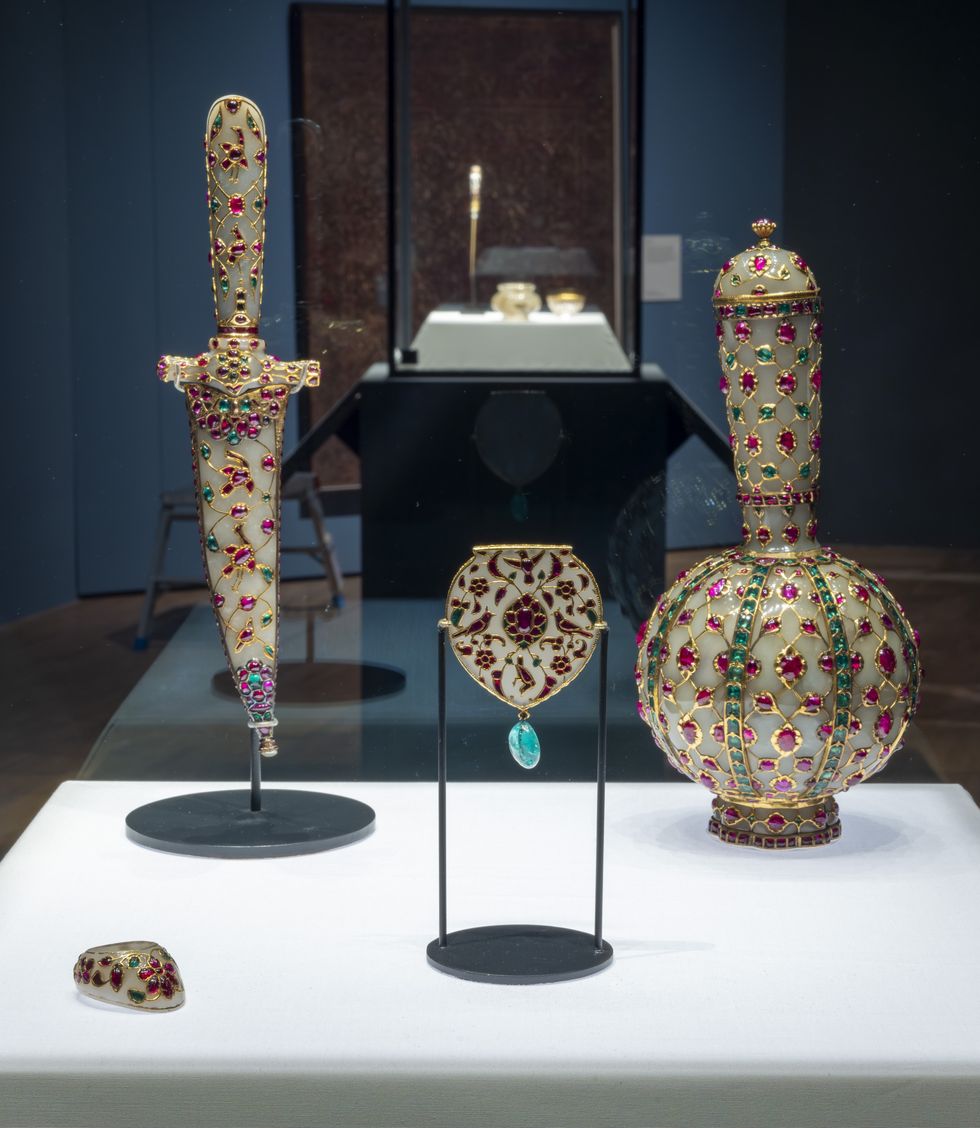 A gem-set dagger, pendant and flask
A gem-set dagger, pendant and flask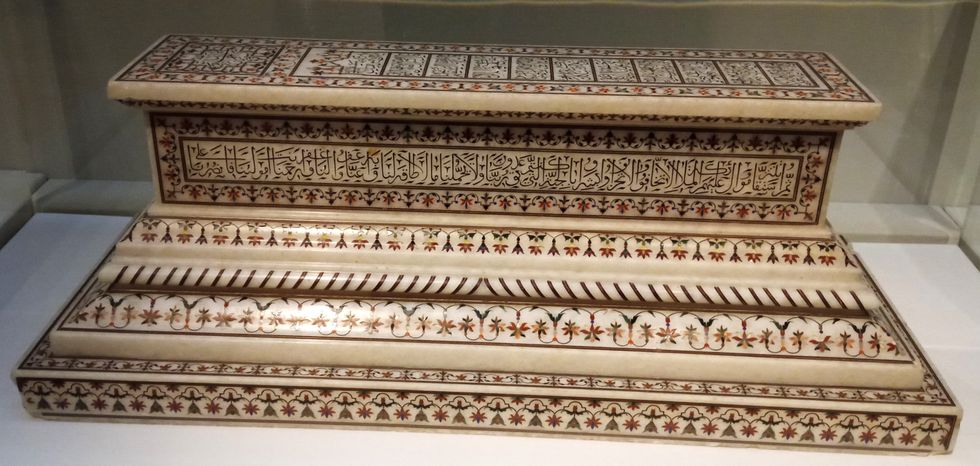 A model of the cenotaph of Mumtaz Mahal
A model of the cenotaph of Mumtaz Mahal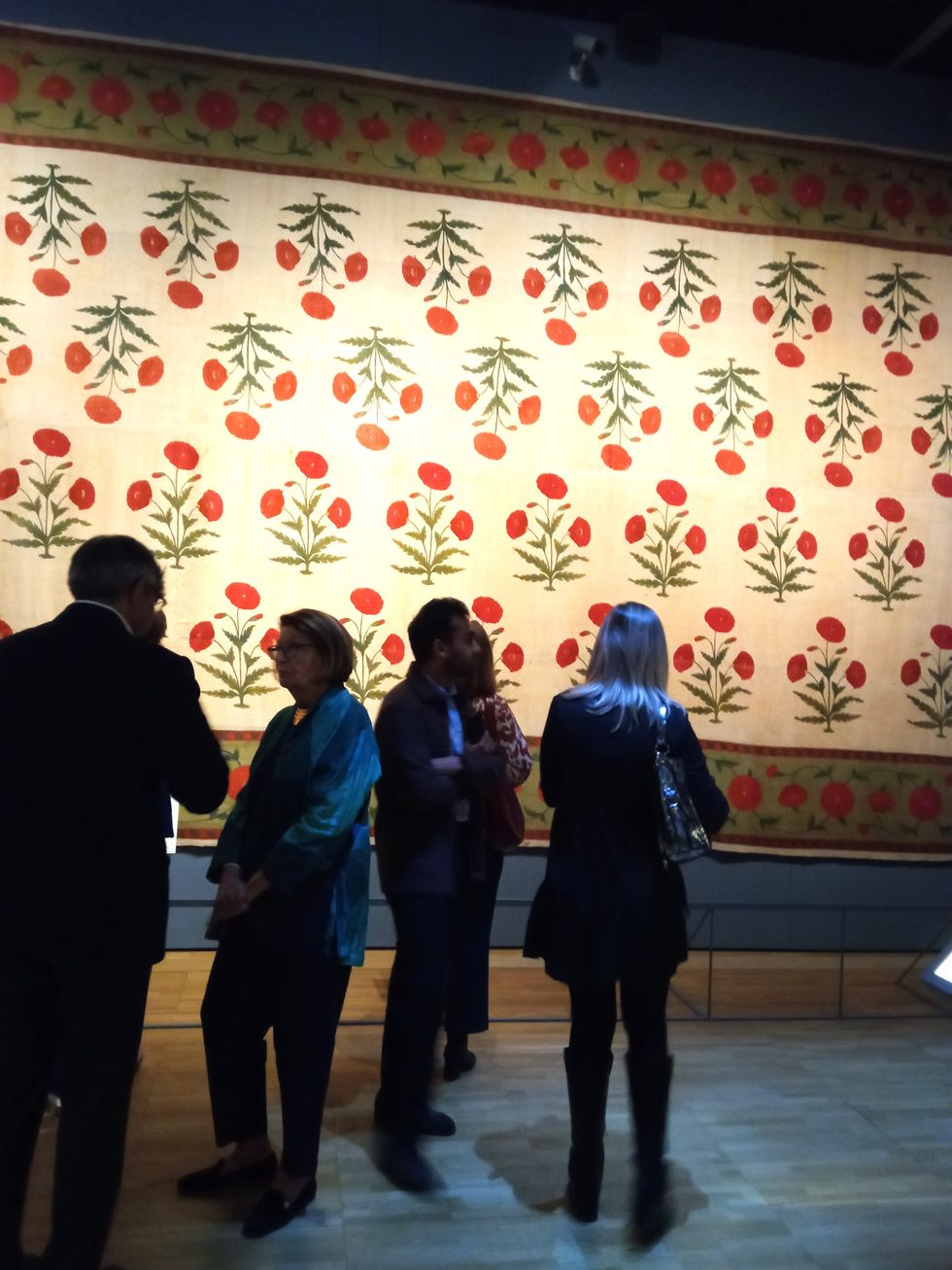 And, a floorspread
And, a floorspread 






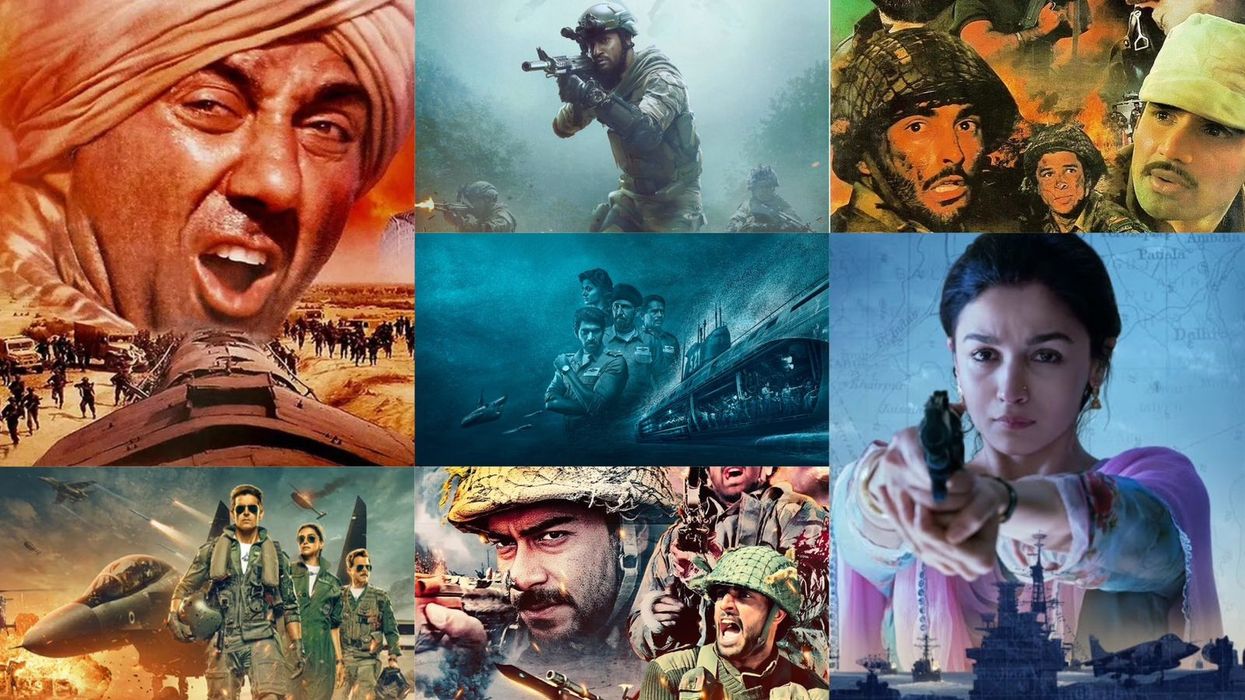

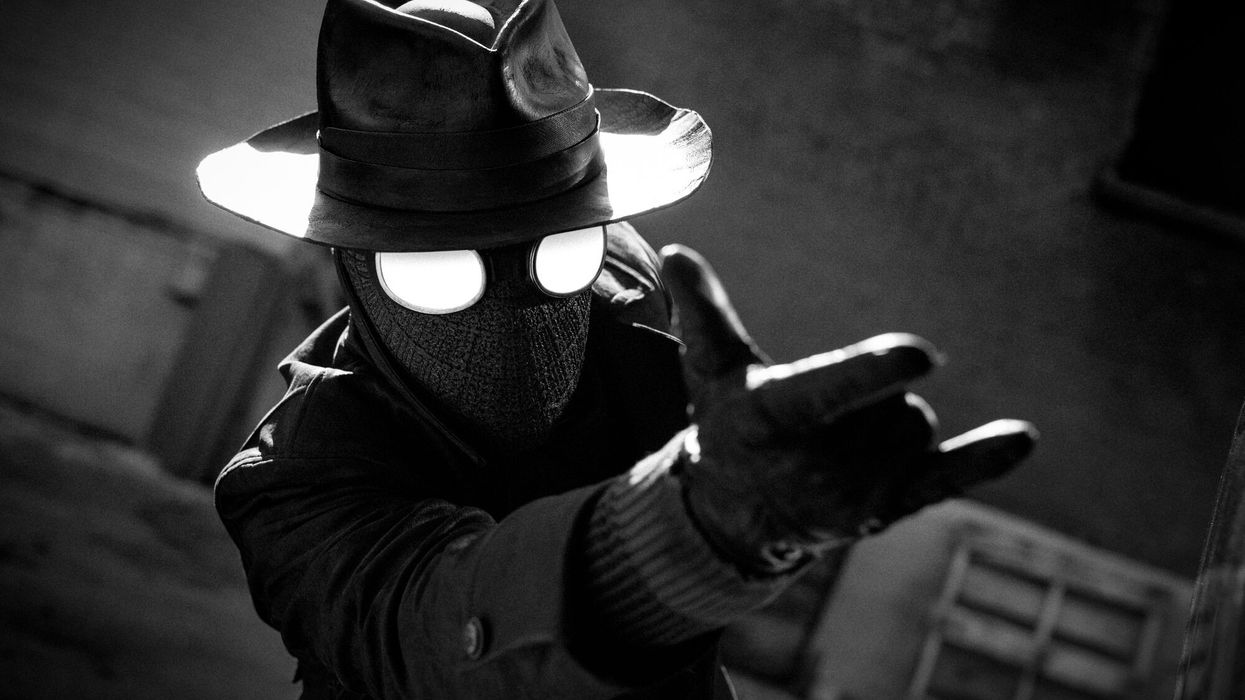

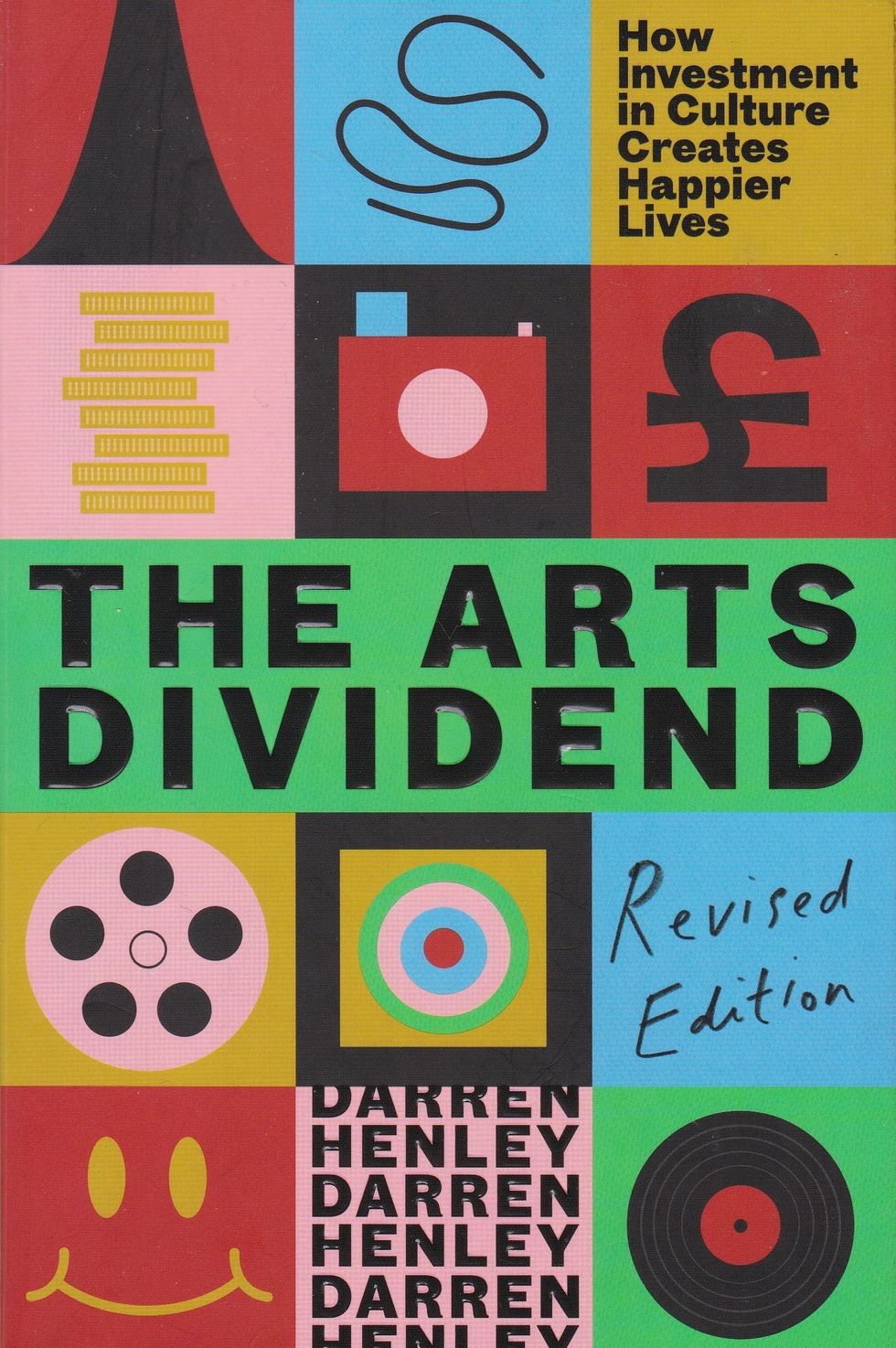 Darren Henley's book
Darren Henley's book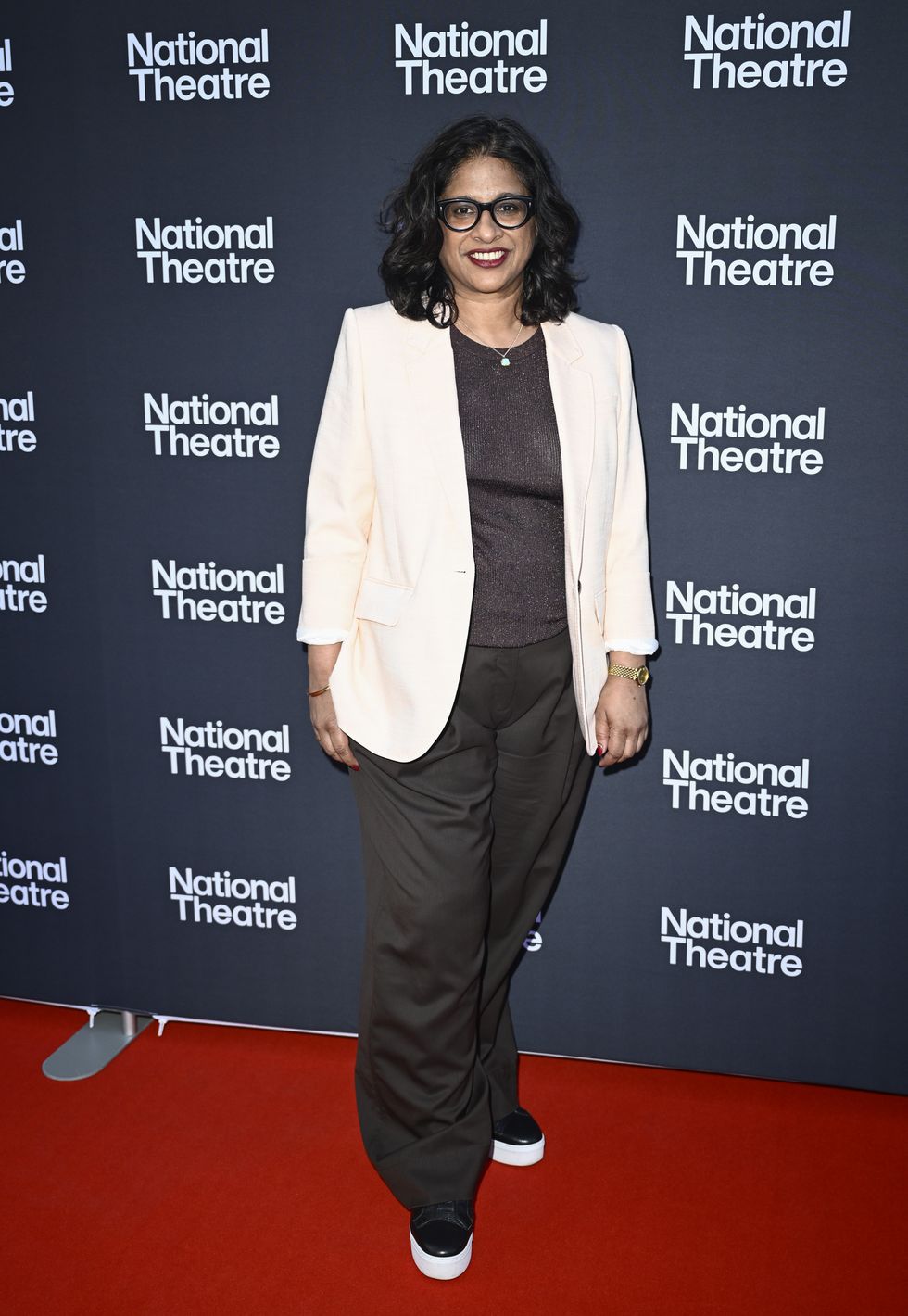 Indhu Rubasingham
Indhu Rubasingham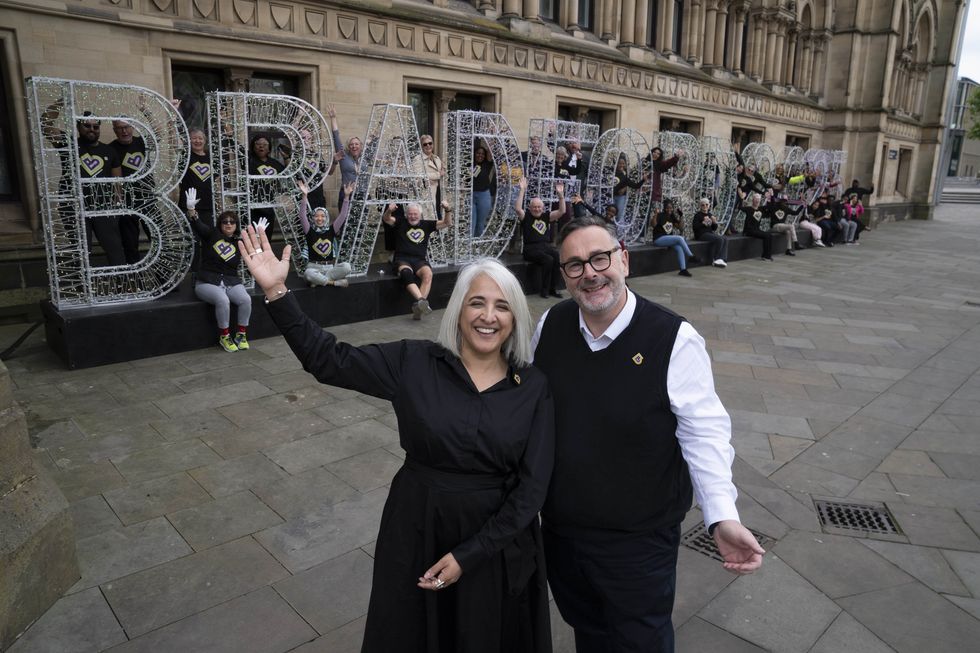 Creative director Shanaz Gulzar and executive director Dan Bates at the launch of Bradford 2025 UK City of Culture, where Syima Aslam’s literature festival is central to the city’s arts scene
Creative director Shanaz Gulzar and executive director Dan Bates at the launch of Bradford 2025 UK City of Culture, where Syima Aslam’s literature festival is central to the city’s arts scene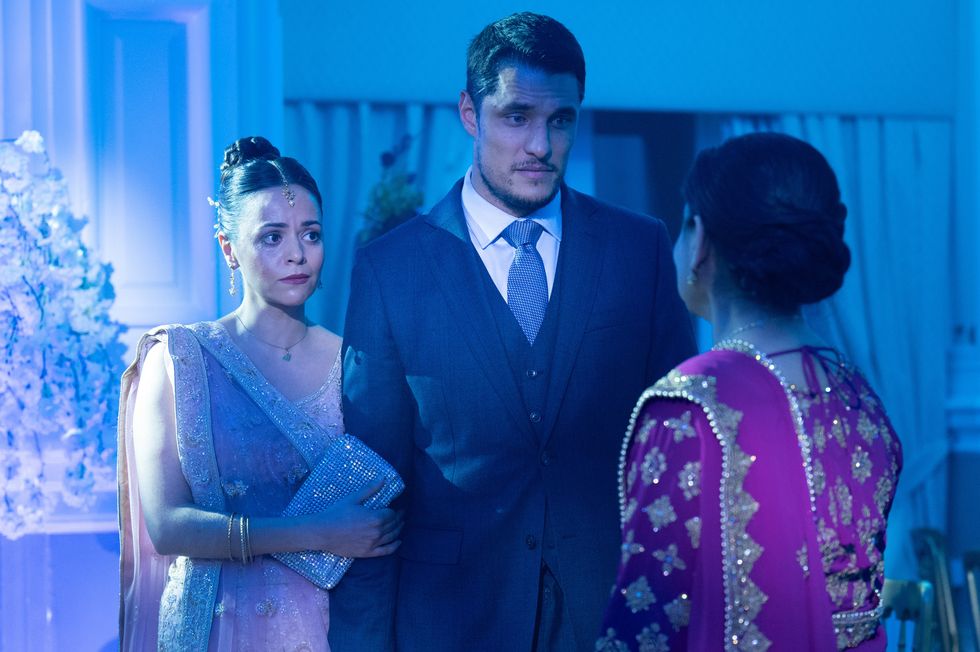 A still from the BBC crime drama Virdee, featuring Staz Nair and Aysha Kala
A still from the BBC crime drama Virdee, featuring Staz Nair and Aysha Kala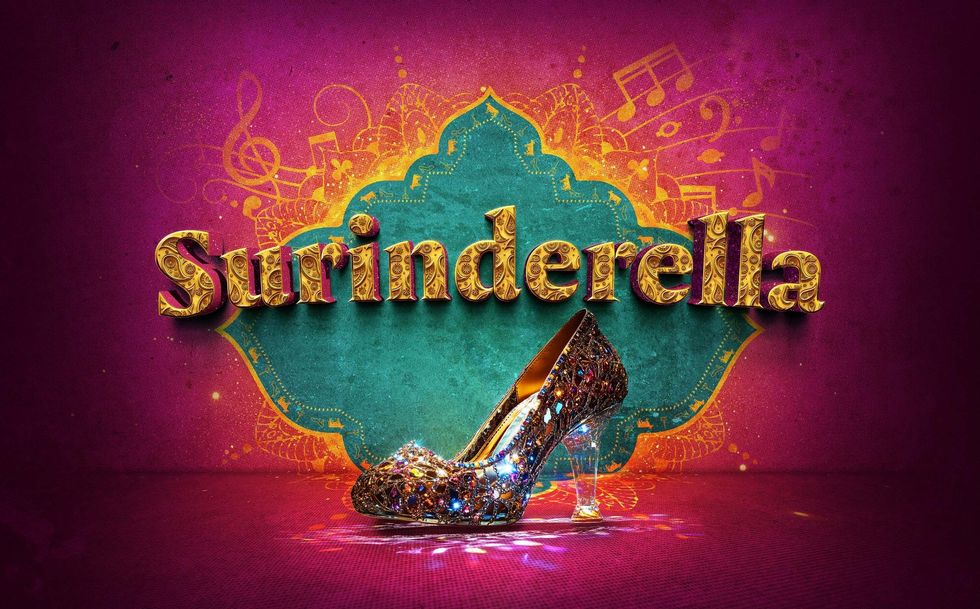 Publicity poster for Rifco’s upcoming production Surinderella
Publicity poster for Rifco’s upcoming production Surinderella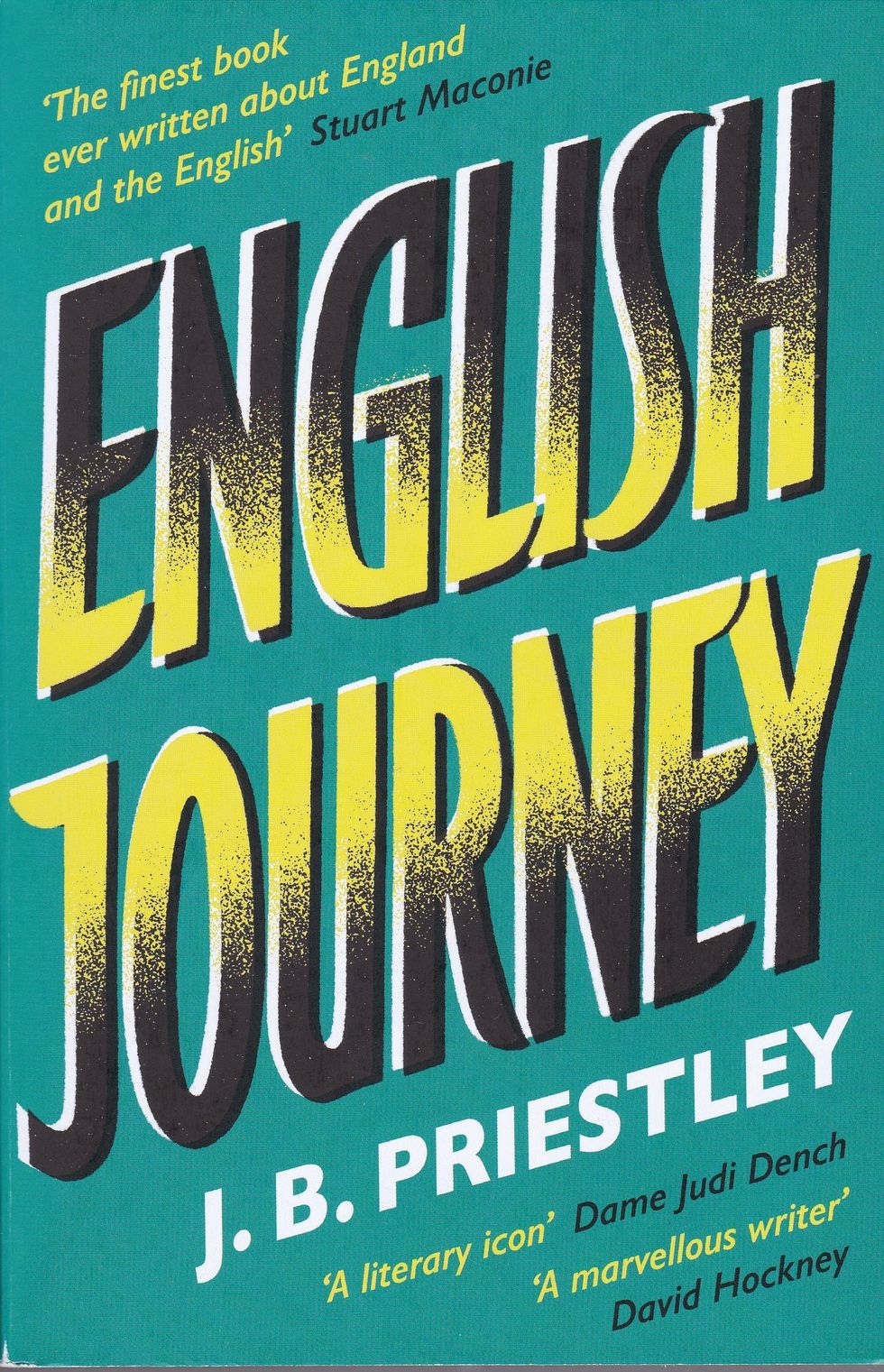 JB Priestley’s English Journey
JB Priestley’s English Journey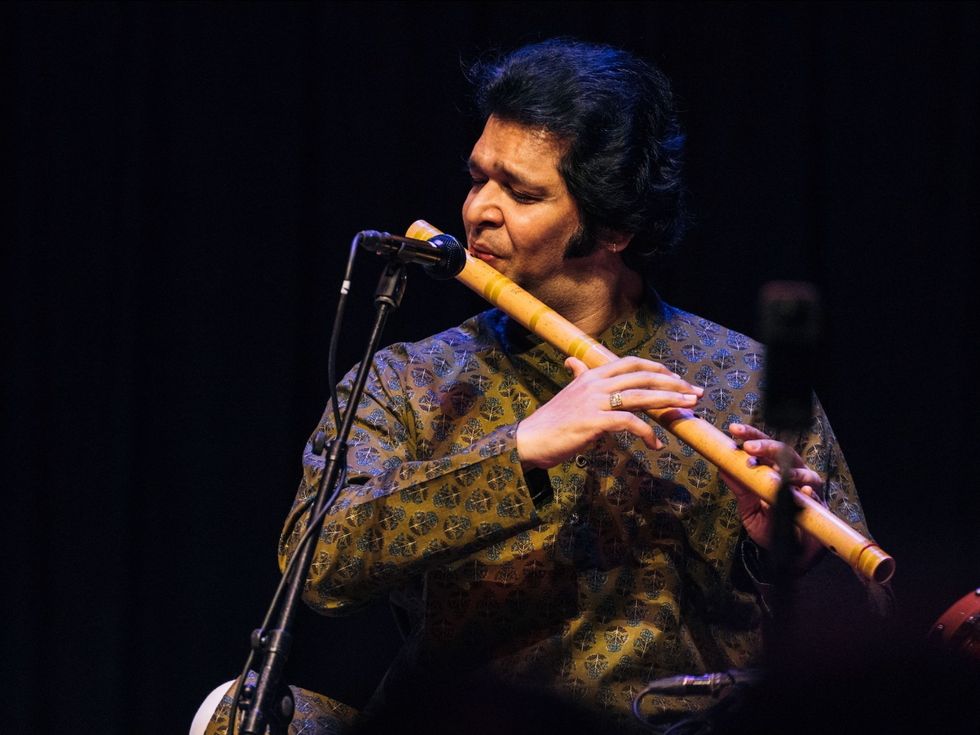 Rakesh Chaurasia performing at a Milap event
Rakesh Chaurasia performing at a Milap event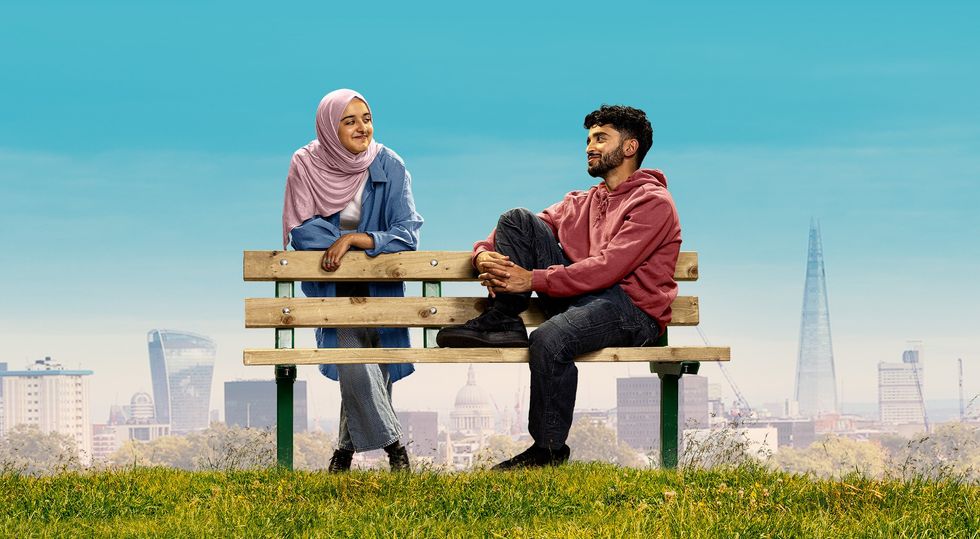 Poster for Peanut Butter & Blueberries, staged at the Kiln Theatre
Poster for Peanut Butter & Blueberries, staged at the Kiln Theatre
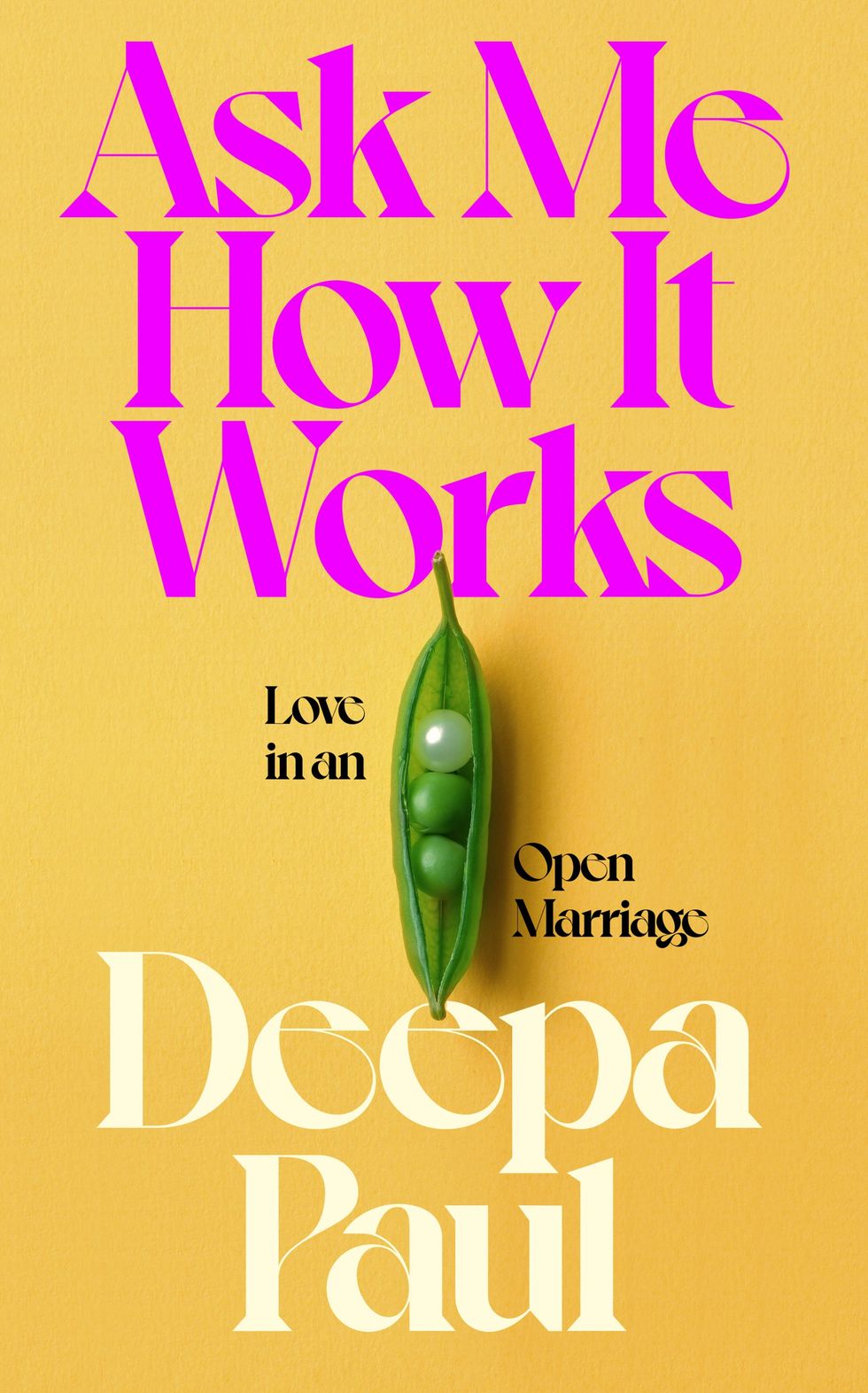 Her new book 'Ask Me How It Works'Instagram/ storiesbydeepa
Her new book 'Ask Me How It Works'Instagram/ storiesbydeepa

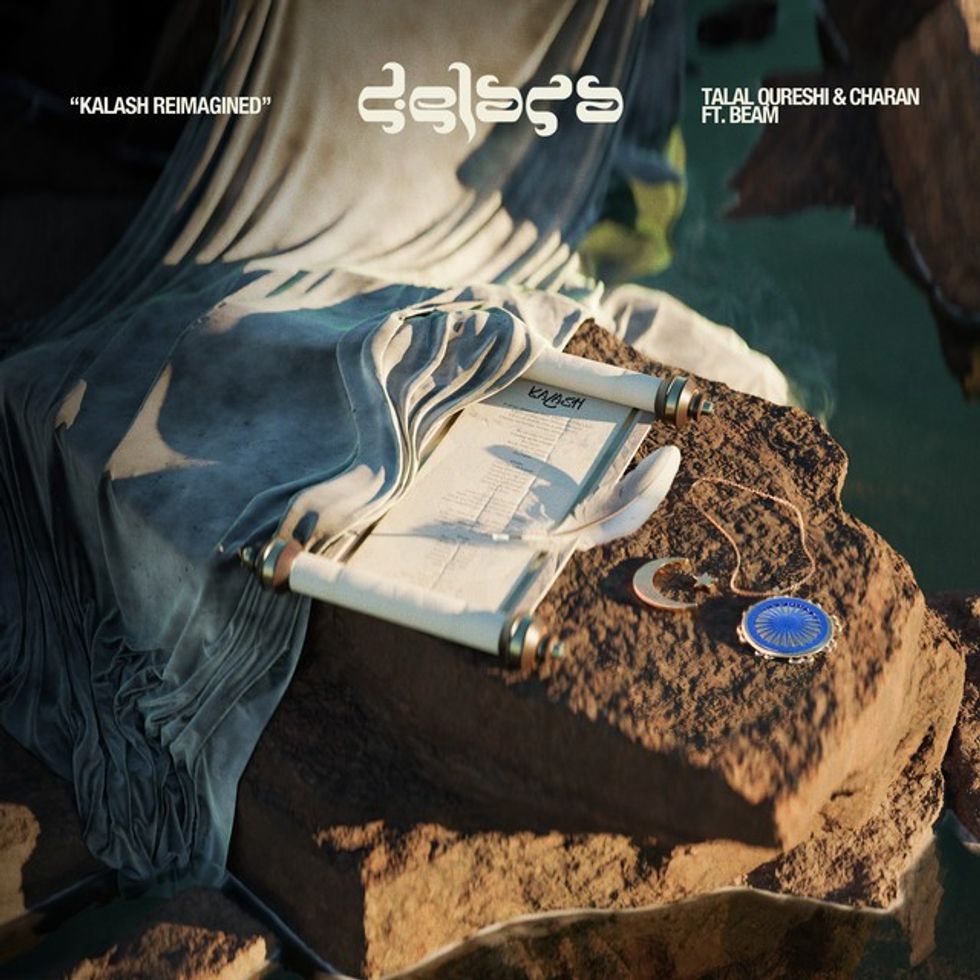 Her new track, Kalash ReimaginedInstagram/ amandadelara
Her new track, Kalash ReimaginedInstagram/ amandadelara